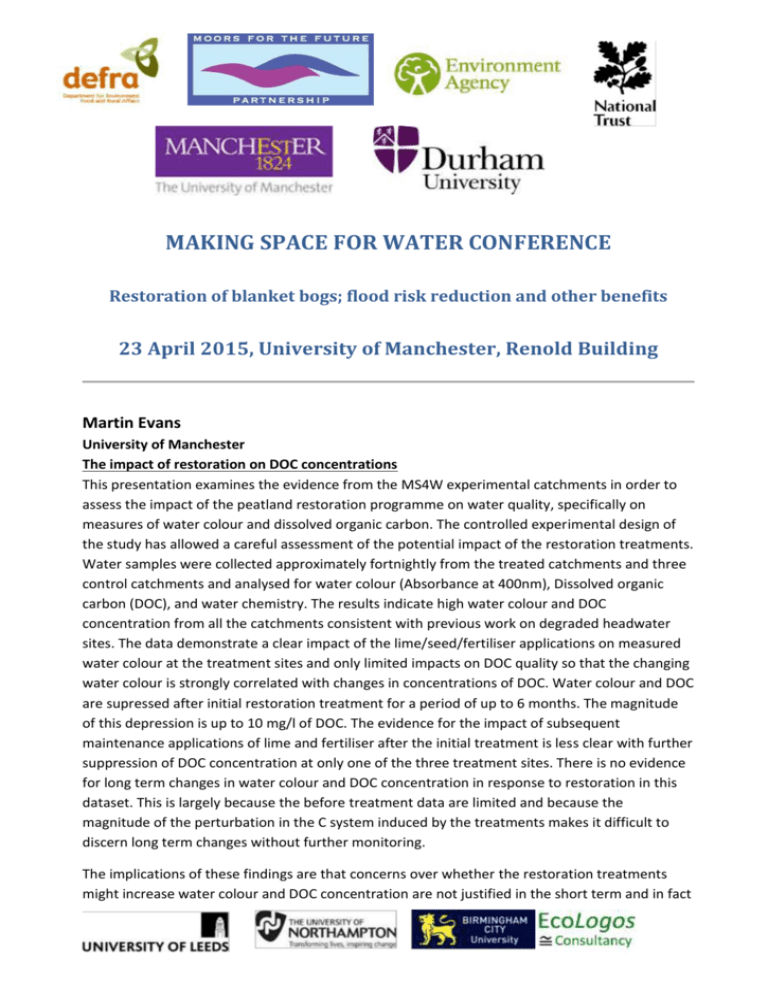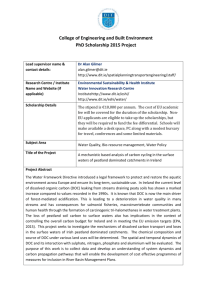The impact of restoration on DOC concentrations
advertisement

MAKING SPACE FOR WATER CONFERENCE Restoration of blanket bogs; flood risk reduction and other benefits 23 April 2015, University of Manchester, Renold Building Martin Evans University of Manchester The impact of restoration on DOC concentrations This presentation examines the evidence from the MS4W experimental catchments in order to assess the impact of the peatland restoration programme on water quality, specifically on measures of water colour and dissolved organic carbon. The controlled experimental design of the study has allowed a careful assessment of the potential impact of the restoration treatments. Water samples were collected approximately fortnightly from the treated catchments and three control catchments and analysed for water colour (Absorbance at 400nm), Dissolved organic carbon (DOC), and water chemistry. The results indicate high water colour and DOC concentration from all the catchments consistent with previous work on degraded headwater sites. The data demonstrate a clear impact of the lime/seed/fertiliser applications on measured water colour at the treatment sites and only limited impacts on DOC quality so that the changing water colour is strongly correlated with changes in concentrations of DOC. Water colour and DOC are supressed after initial restoration treatment for a period of up to 6 months. The magnitude of this depression is up to 10 mg/l of DOC. The evidence for the impact of subsequent maintenance applications of lime and fertiliser after the initial treatment is less clear with further suppression of DOC concentration at only one of the three treatment sites. There is no evidence for long term changes in water colour and DOC concentration in response to restoration in this dataset. This is largely because the before treatment data are limited and because the magnitude of the perturbation in the C system induced by the treatments makes it difficult to discern long term changes without further monitoring. The implications of these findings are that concerns over whether the restoration treatments might increase water colour and DOC concentration are not justified in the short term and in fact there may be short term water colour benefits. However, because of the ongoing nature of the restoration treatments insufficient time has elapsed post-treatment to assert that there are no longer term impacts. Further monitoring will be required to assess the long term trajectory of water colour and DOC in response to the peatland restoration process.




